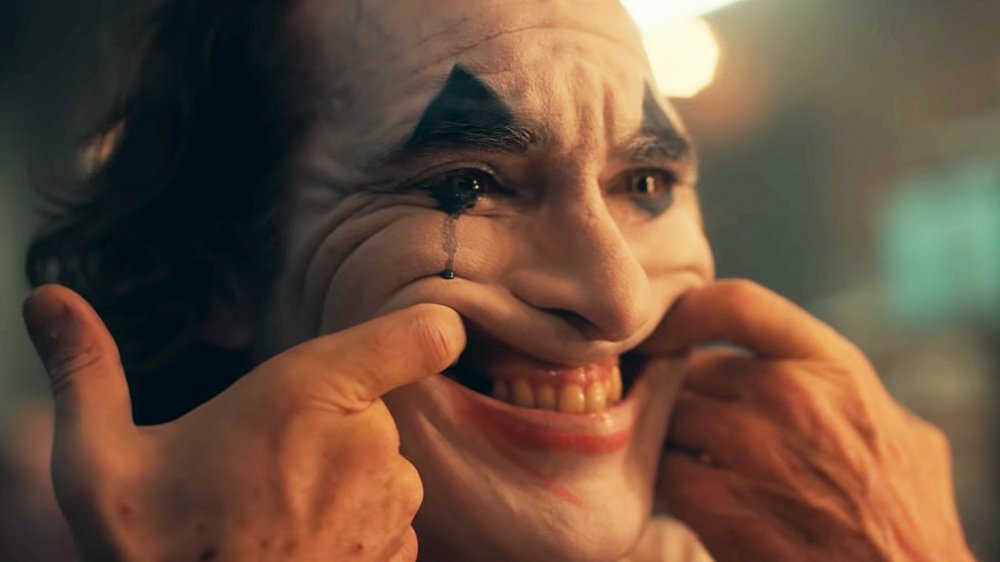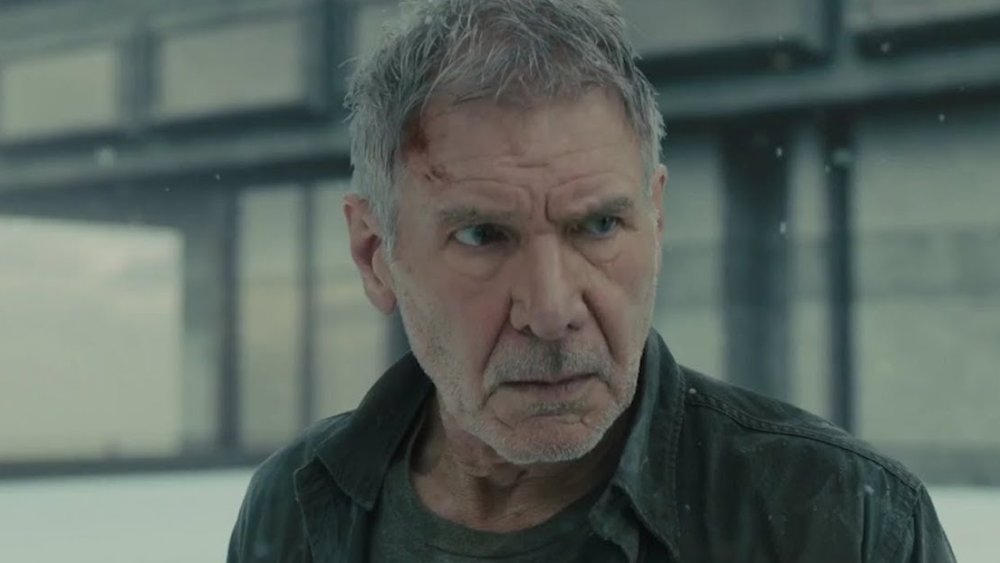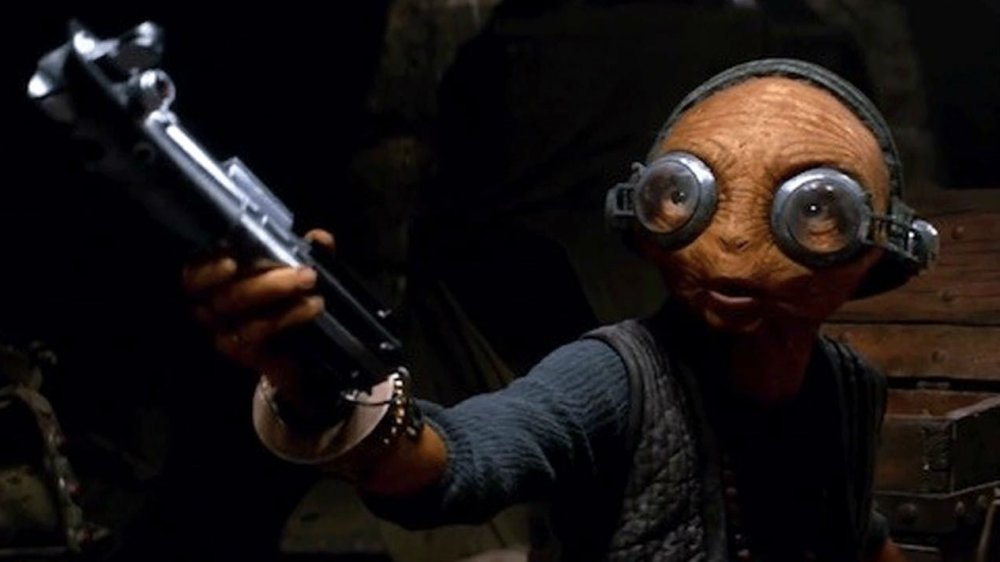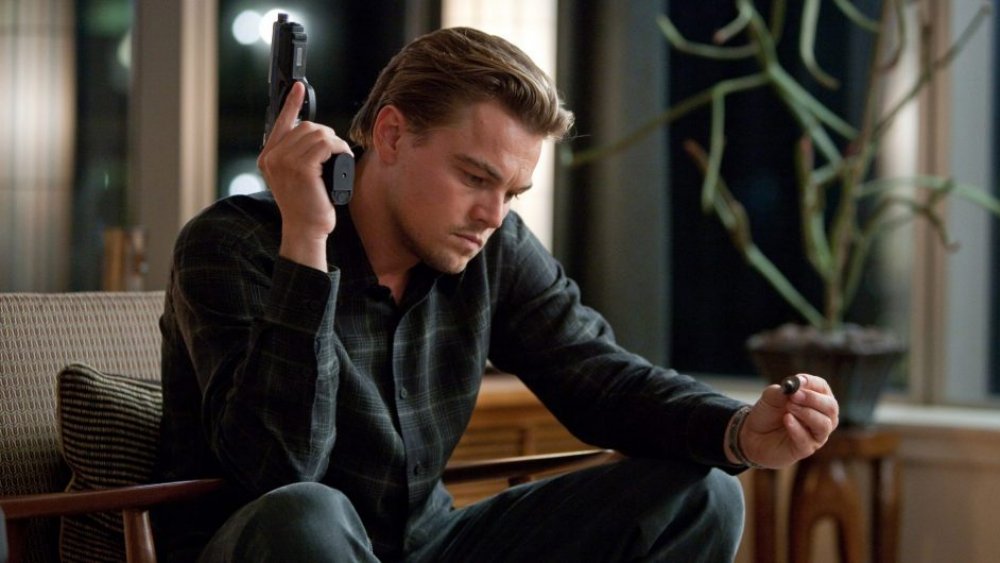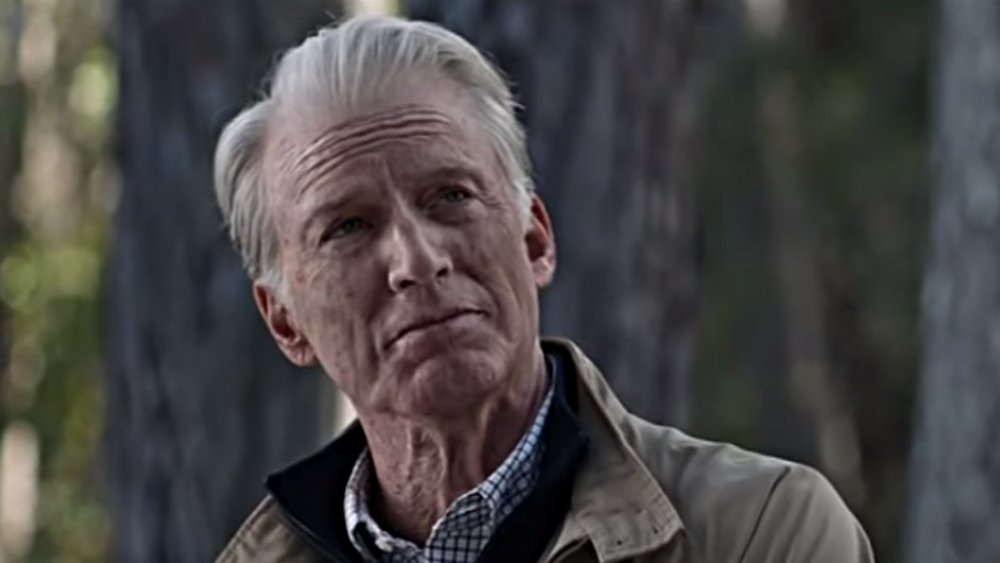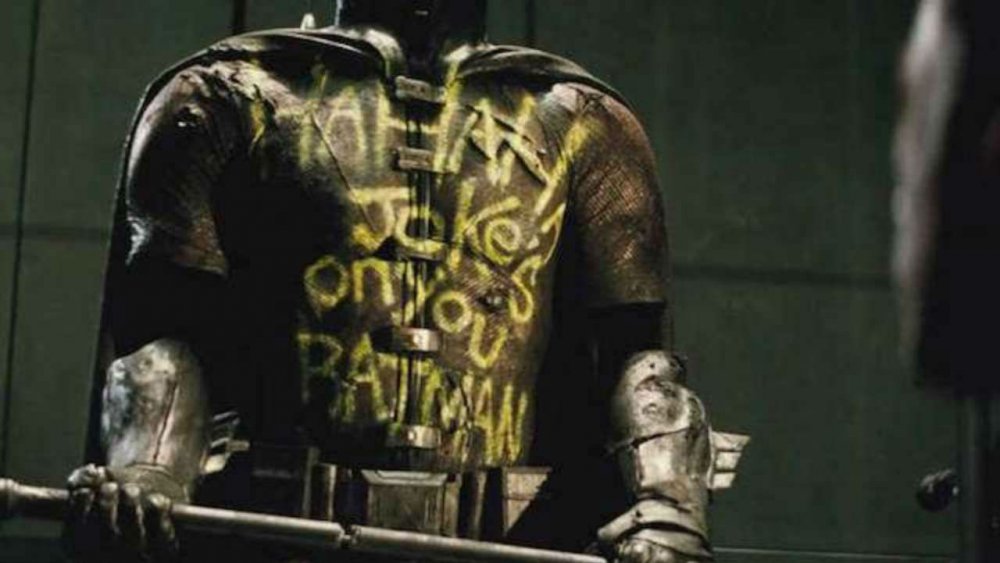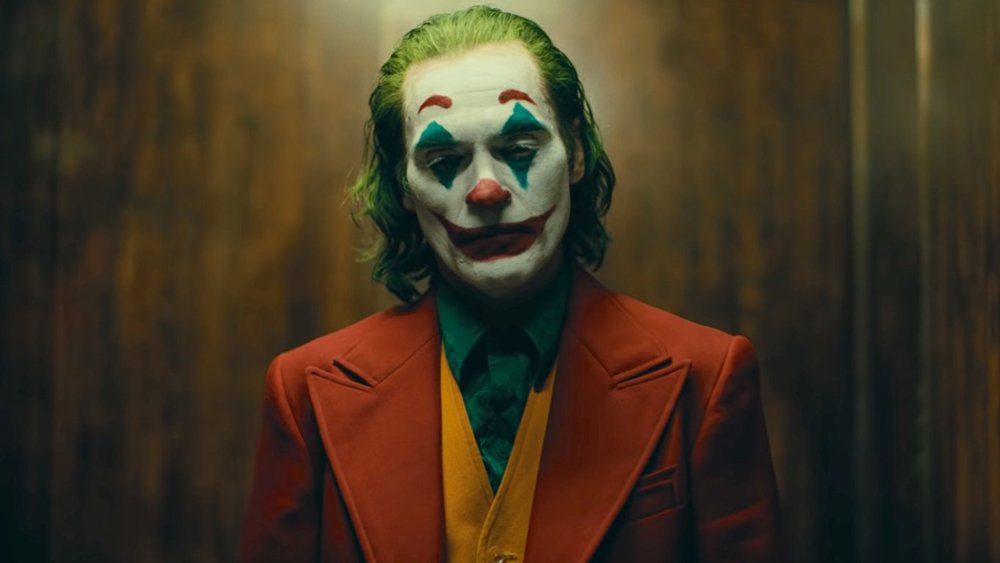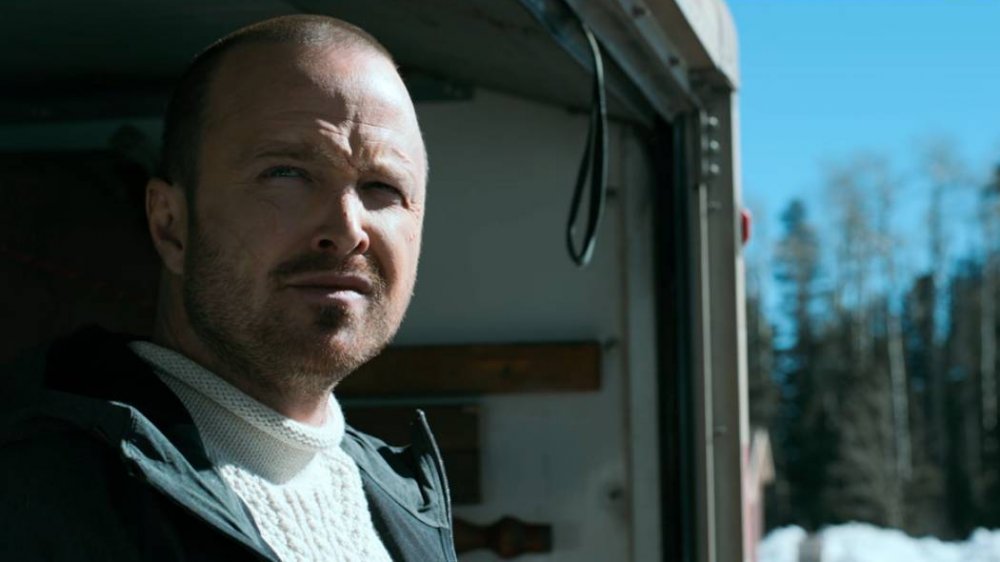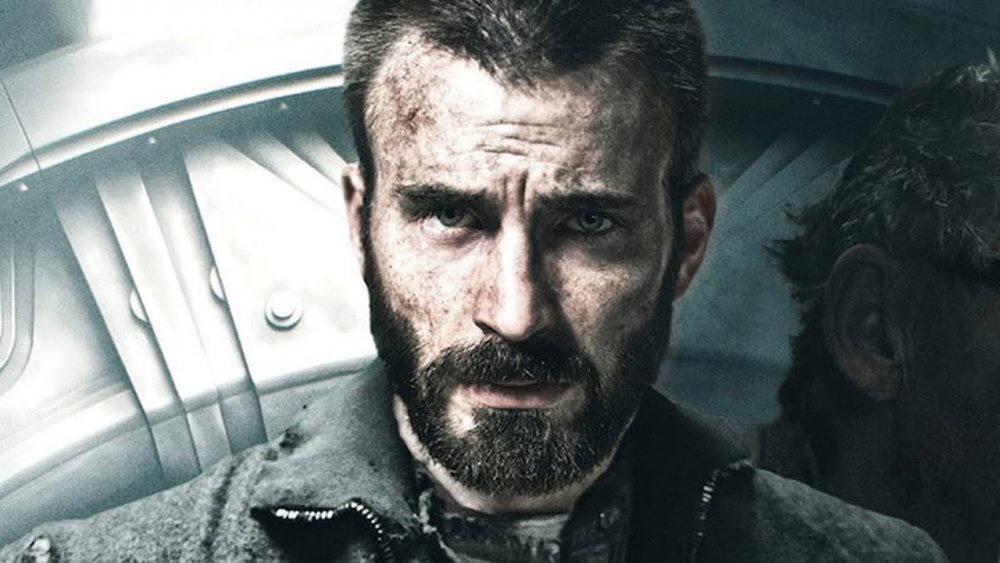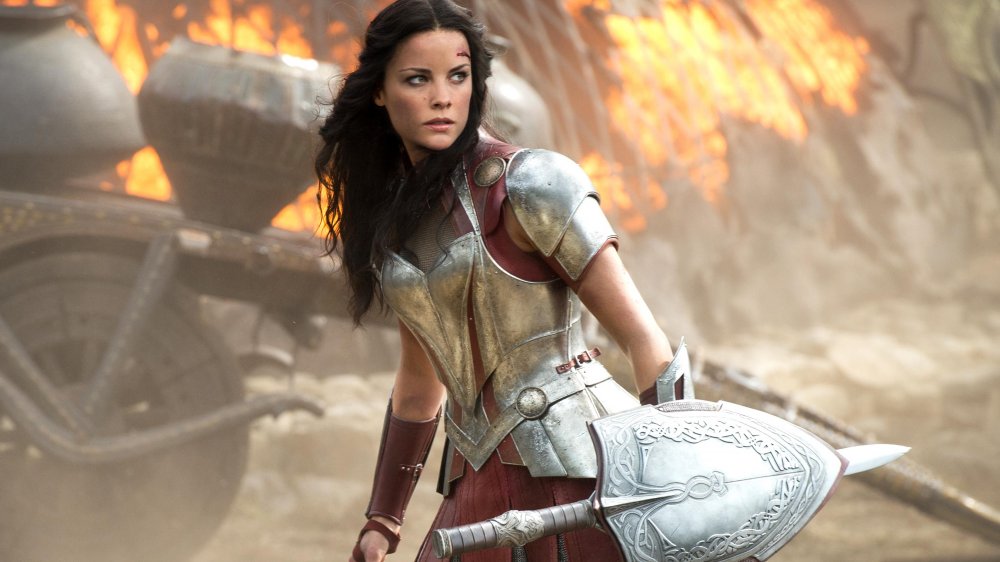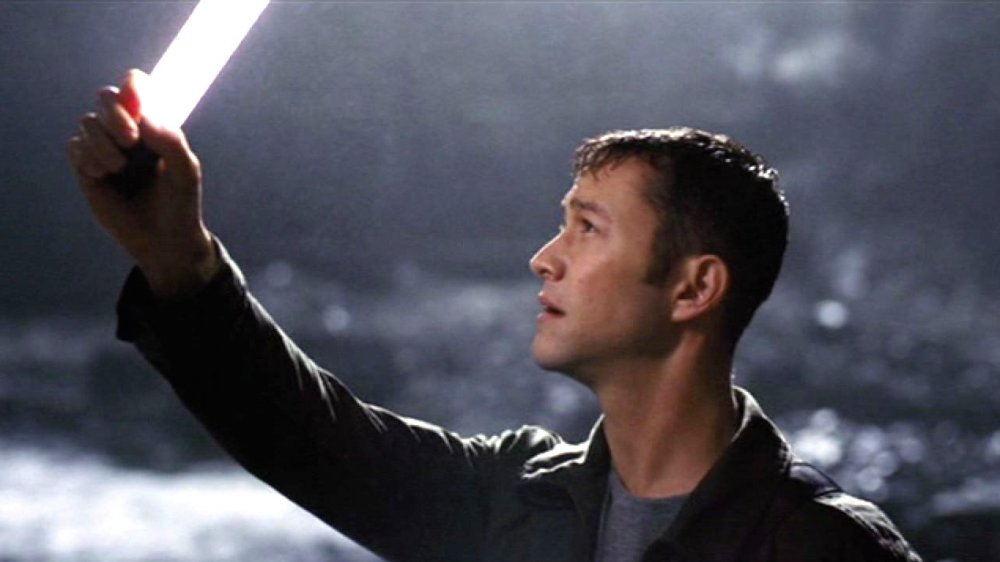The Biggest Unanswered Movie Questions Of The Past Decade
In real life, things are rarely as neatly wrapped up as they are in movies. By the end of most films, all of your biggest questions are answered. You know who killed who, who is guilty, who was falsely accused, who lives, who dies, and who will live happily ever after. Real life is hardly as conclusive.
But every now and then, the credits roll, the lights turn on, and the biggest questions we had are still mysteries. In the case of a film that's just one in a series, there's a fair chance we've been purposely left wanting more, and we're sure to learn the answer in a sequel. In other movies, there just isn't enough time for a reveal, and sometimes the realities of casting and all the other working pieces behind the scenes make an answer impossible. In other cases, the filmmakers go out of their way keep their mysteries. They'd rather the audience come up with their own answers.
The past decade has left us with a good share of these mysteries. Some of them might be answered soon, and others are likely to remain in the realm of individual interpretation for as long as the films are remembered. From misplaced lightsabers to dreaming mercenaries, here's what we think are the biggest unanswered movie questions of the past decade.
Is Deckard a replicant?
In Blade Runner, Harrison Ford plays the character of Deckard, a cop tasked with killing very specific targets — replicants (aka robots) who are created by the powerful Tyrell Corporation to look and act like humans. However, one of the biggest bones of contention between fans and even people intimately involved in making the film is the question of whether or not its lead character is himself a replicant. In 2014, director Ridley Scott told Digital Spy that without a doubt, "[Deckard] is a replicant." Harrison Ford, on the other hand, is on record saying Deckard is a human, and Hampton Fancher — who was a writer for both Blade Runner and Blade Runner 2049 — agrees with Ford. Debating fans may have been hoping that the film's 2017 sequel, Blade Runner 2049, would clear things up, but if so, they were wrong.
Similar to the original film, Blade Runner 2049 ends without a definitive an answer regarding the question of Deckard's humanity or lack thereof. We learn that Deckard and the late replicant Rachael somehow conceived a child, and Jared Leto's character, Wallace, gives us a monologue exploring the question, but we never learn the truth either way. It seems likely this is one question that audiences will have to accept will remain unanswered for many years to come.
How did Maz Kanata get Luke's lightsaber?
Exactly how does Maz Kanata get her hands on Anakin Skywalker's lightsaber? The diminutive alien offers the decades-old weapon to Rey in her tavern on Takodana in 2015's Star Wars: The Force Awakens. Freaked out by Force visions, Rey initially refuses it, and as a result, Finn is briefly its caretaker. However, Rey finally takes it up in order to defeat Kylo Ren at the end of the film. But how did the lightsaber wind up in Takodana in the first place?
In order of the narrative (as opposed to the theatrical release), we first see Anakin Skywalker's lightsaber in 2002's Attack of the Clones. Anakin uses it before his transformation into Darth Vader, and Obi-Wan Kenobi takes it from Anakin when the latter is defeated at the end of 2005's Revenge of the Sith. Kenobi gives Luke the lightsaber in 1977's A New Hope. The last time we see it before The Force Awakens is in the climactic battle between Luke and Vader on the planet Bespin at the end of 1980's The Empire Strikes Back. The weapon is in Luke's hand when Vader chops it off, sending it down the long shaft the pair duel over. So how exactly did the saber make its way to a container in a tavern on a different planet in a different solar system? Well, we really don't have a better answer other than "the Force willed it."
Is Cobb still dreaming?
The ending of 2010's Inception is the kind which is likely to be debated for years, maybe even decades, to come. Directed by Christopher Nolan, the film boasts a heavyweight cast including Joseph Gordon-Levitt, Tom Hardy, and Ellen Page, among others. Leonardo DiCaprio plays its lead, Cobb, who's the head of a crew of thieves specializing in corporate espionage. Cobb and his team enter their victims' dreams, steal information, and plant ideas into their subconscious.
One of the dangers of their work is the risk of being stuck in a dream that never ends without knowing it. So Cobb and his colleagues each carry what they call totems (items that let them know whether or not they're in a dream). Cobb carries a spinning top. Whenever he doubts whether or not he's in a dream, he spins it, and if the top doesn't stop spinning, he knows he's still asleep.
Inception ends with Cobb testing his totem after being reunited with his children, but we never learn whether or not the top stops spinning. Cobb spins the top on a table, then stands up and walks away. The screen fades to black with the top still spinning. Nolan later explained he ended the film this way to demonstrate that, to Cobb, it didn't matter whether or not he was dreaming. During his 2015 Princeton commencement speech, Nolan said, "[Cobb] didn't really care anymore, and that makes a statement: Perhaps, all levels of reality are valid."
How did Steve Rogers return to give Sam the shield?
When the elderly Steve Rogers gives Sam Wilson his shield at the end of 2019's Avengers: Endgame, it may seem simple as far as time travel plot points go. Captain America goes back in time to return the Infinity Stones, and rather than return, he decides to stay in the past and spend as much of the rest of his life as he can with Peggy Carter. Then, having lived much of that life, Cap returns to the spot where he was sent back in time and hands his shield over to Sam. What's confusing about that?
Well, here's the thing. When Steve Rogers goes back in time and stays with Peggy Carter, he changes history, and in doing so, he creates an alternate timeline. While speaking to Entertainment Weekly shortly after the release of Endgame, directors Joe and Anthony Russo said that Cap's new life with Peggy does not take place in the prime MCU timeline. So if he lives in this new splintered reality, how does he get back to the prime MCU reality in order to hand the shield off to Sam Wilson? The Russos have admitted they don't have an answer. "The question then becomes, how is [Steve Rogers] back in this reality to give the shield away?" Joe Russo said to EW. "Interesting question, right? Maybe there's a story there."
In a world like the MCU's, there's no shortage of possibilities. Only time will tell if we ever get a definitive explanation for Steve Rogers' return.
Who did the Robin suit in Batman v Superman belong to?
Ever since the early trailers for Batman v Superman: Dawn of Justice featured a Robin suit in a display case — complete with "Ha Ha Ha, joke's on you, Batman" painted on the torso — the assumption has been that the suit belonged to Jason Todd. Todd was the second boy to act as Batman's sidekick with the name Robin. He was brutally murdered by the Joker, though he would return in the 21st century as the vigilante Red Hood. Still, his death — confirmed in 1988's Batman #428 — remains one of the most memorable moments in Batman's history.
The theory that the suit belonged to Jason Todd seemed to be confirmed on Warner Bros' Studio Tour Hollywood Facebook page in a video that has since been removed. But it was the Batman v Superman director himself who questioned the validity of the theory. In 2018, a fan referenced the shot of the suit and asked Snyder if he ever planned for there to be a Jason Todd subplot in Batman v Superman. Snyder's response? "What makes you think that's Jason Todd?"
Well, to be honest, it's a pretty good guess because the Joker doesn't brutally murder any other Robins in the comics, though Snyder's words on the subject can't help but get us thinking. Could it be Dick Grayson's suit? Could it be in the DCEU that Grayson was killed? Are we jumping to conclusions when we assume whoever was in the suit is dead?
How much of Joker was Arthur Fleck's imagination?
The Arthur Fleck of 2019's Joker lives in a fantasy world. Early in the film, Fleck imagines himself in the audience of his favorite late night talk show, eventually being called up to the stage by host Murray Franklin. Later, we learn he's even imagined an entire romantic relationship with his neighbor, Sophie, who in reality, barely remembers his name.
So when we learn that Arthur's time with Sophie was all in his head, it's difficult to not call most or all of the film's events into question. When he finally does show up on the Murray Franklin Show, for example, even though the host doesn't treat him as nicely as he does in Fleck's earlier fantasy, in many ways his behavior seems just as nonsensical. He allows Arthur to say horrible things on live TV. He doesn't pull the plug but instead argues with Arthur until the failed comedian finally murders the host.
On one extreme end of the spectrum, it could be that almost the entire story is just Fleck's imagination. At the end of the movie, Fleck is in a mental institution. Earlier in the film, while Fleck talks to his social worker, there's a brief flashback of him slamming his head into a door in the same institution. It could be those are the only "real" parts of the movie, and everything else is his fantasy. Either way, it's one of the biggest unanswered questions in Joker, and one we might never get an answer to.
What did Jesse write to Brock in El Camino?
The acclaimed TV series Breaking Bad ends with Jesse Pinkman racing his way to freedom. After being enslaved as a meth cook for a bunch of white supremacists, he's finally free, and the Netflix movie El Camino tells us what happens to Jesse once he reaches civilization.
After encountering some old friends, discovering a secret stash of cash, and running across some really bad dudes, Jesse finds Ed — the same guy who relocated Walter White toward the end of Breaking Bad — and convinces the older man to smuggle him all the way to Alaska. Once they're up north, Jesse gives Ed a letter addressed to Brock, the son of Andrea Cantillo. In one of the most soul-crushing moments of Breaking Bad, Jesse is forced to watch Andrea get murdered, as the white supremacists enslaving Jesse kill her as punishment for Jesse trying to escape. As for Brock, he was left orphaned and without a clue as to why his mother was shot.
So what does Jesse write to Brock? Well, we never get a chance to read the letter. We only see the envelope. It's tough to imagine what Jesse could possibly say to the eight-year-old. Maybe it's better to not know, or our hearts might get broken all over again.
Did anyone else survive the crash in Snowpiercer?
Most post-apocalyptic films begin and end with only a small portion of the Earth's population left, and Snowpiercer is no different in that respect. In the film, all that's left of the human race is confined to a train that protects them from the fatal cold of a second Ice Age. What's different about Snowpiercer is that by the end of the movie, it isn't clear how much of the human race is left.
A cruel aristocracy rules the locomotive of Snowpiercer, with the poorest survivors confined to the tail. The heroic Curtis leads a revolt and pushes his followers through the length of the train to the engine caretaker, Wilford. And when things start getting desperate, one of Curtis' allies, Namgoong, sets off an explosive that triggers an avalanche, derailing the train and presumably killing most of the people on board. In the film's final moments, Yona and Timmy — a teenage girl and a young boy — emerge from the train wreck. The movie ends just as they spot a polar bear nearby.
The explosion and the crash it causes are dramatic enough that we can assume few survive, but as far as the named characters are concerned, we never know for sure. We don't see the bodies of Curtis, Namgoong, or Wilford. If Yona and Timmy really are all that's left at the end of Snowpiercer, it doesn't seem like humanity has long to go before the end.
Where is Sif?
Ever since 2017's Thor: Ragnarok, the warrior Sif has been missing from the MCU. She wasn't there for the battle with Hela, she wasn't on the Asgardian refugee ship in Avengers: Infinity War, and she wasn't with the Asgardians in Avengers: Endgame.
According to Jaime Alexander, she wasn't there for Ragnarok because of a scheduling conflict between the movie's shooting schedule and that of her TV series, Blindspot. Sif isn't mentioned in the film, but Marvel Studios president Kevin Feige gave a narrative explanation connected to Loki's secret usurping of the Asgardian throne at the end of Thor: The Dark World. Just as we learn in Ragnarok that Loki had Heimdall branded a traitor, Feige said Loki would want Thor's closest friends as far away from Asgard as possible so he found some reason to exile her. "Sif was probably banished," Feige said. "She's off somewhere." However, neither Feige nor anyone else has bothered to specify what "somewhere" means
If Alexander has her way, we could learn the fate of Sif in the next couple of years. Shortly after the news that Ragnarok director Taika Waititi would be returning for 2021's Thor: Love & Thunder and that it would include the return of Valkyrie as not only New Asgard's king but as the MCU's first openly LGBTQ+ hero, Jamie Alexander let it be known she was interested in returning as Valkyrie's queen.
What will Blake do with Batman's arsenal?
At the end of The Dark Knight Rises, the final installment of director Christopher Nolan's Dark Knight trilogy, Bruce Wayne fakes his own death, but he doesn't seem content to leave Gotham without a protector. So he leaves a parcel for police detective John Blake — whose first name we learn is "Robin" — that leads Blake to the Batcave and all its secrets. At the same time, James Gordon discovers the Bat Signal has been repaired. The assumption seems to be that with the Batcave's arsenal at his disposal, Blake will take up the the mantle of Batman to make sure Gotham still has its protection against international assassins and psychotic clowns.
But will that happen? More to the point, could that happen? Throughout The Dark Knight Rises, Blake proves himself dedicated to the cause of justice, which is likely why Wayne chose him as a successor. Still, he can be as dedicated as he likes but it doesn't change the fact that he's missing some key components to being Batman. He doesn't have the billions of dollars at Wayne's disposal, as that's largely left to his butler, Alfred. And he doesn't have someone like Alfred to bandage his wounds or Lucius Fox to design new tech. He doesn't have the dual identity of a billionaire playboy to help hide is crime-fighting, and perhaps most importantly, he doesn't have the decade Wayne spent abroad training to avenge his parents.
Could Blake still fill Wayne's shoes? Maybe. But it's hardly a certainty.
